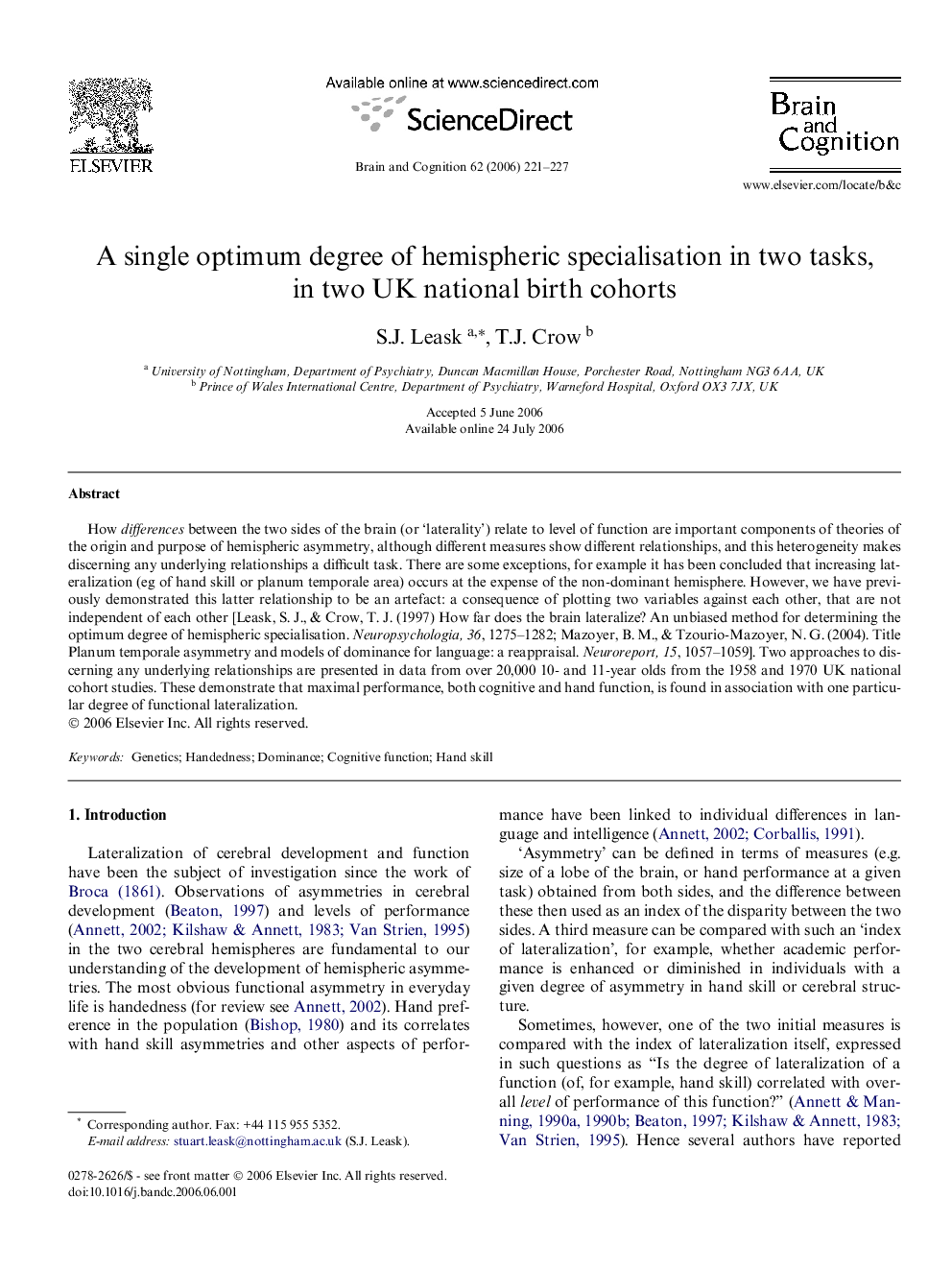| کد مقاله | کد نشریه | سال انتشار | مقاله انگلیسی | نسخه تمام متن |
|---|---|---|---|---|
| 924662 | 921253 | 2006 | 7 صفحه PDF | دانلود رایگان |

How differences between the two sides of the brain (or ‘laterality’) relate to level of function are important components of theories of the origin and purpose of hemispheric asymmetry, although different measures show different relationships, and this heterogeneity makes discerning any underlying relationships a difficult task. There are some exceptions, for example it has been concluded that increasing lateralization (eg of hand skill or planum temporale area) occurs at the expense of the non-dominant hemisphere. However, we have previously demonstrated this latter relationship to be an artefact: a consequence of plotting two variables against each other, that are not independent of each other [Leask, S. J., & Crow, T. J. (1997) How far does the brain lateralize? An unbiased method for determining the optimum degree of hemispheric specialisation. Neuropsychologia, 36, 1275–1282; Mazoyer, B. M., & Tzourio-Mazoyer, N. G. (2004). Title Planum temporale asymmetry and models of dominance for language: a reappraisal. Neuroreport, 15, 1057–1059]. Two approaches to discerning any underlying relationships are presented in data from over 20,000 10- and 11-year olds from the 1958 and 1970 UK national cohort studies. These demonstrate that maximal performance, both cognitive and hand function, is found in association with one particular degree of functional lateralization.
Journal: Brain and Cognition - Volume 62, Issue 3, December 2006, Pages 221–227